
A laptop is simply a great tool to have as a student whether you’re in the classroom, studying in the library, or participating in a Zoom class from your room. But which one is the best to use for? It’s not always straightforward to pick the right model when personal preference and program requirements stand out as major factors going Back to School.
This best laptop list aims to clear the air by pointing you in the right direction based on what you feel is your biggest priority. There are more where these came from but they’re a good place to start.
Top 10 laptops for students this 2025
Whether you’re prioritizing performance, portability, battery life, or sticking to a student-friendly budget, this laptop guide breaks down the best options based on what matters most. Each recommendation is informed by seasonal search trends and student needs.
Before we dive into the details, here’s a snapshot of our top picks:
- Best overall student laptop: HP 15.6″ laptop with 8GB RAM
- Best for portability: ASUS Zenbook A14 14″ Copilot+ laptop
- Best battery life: Lenovo Yoga Slim 7x laptop
- Best budget option: HP 15.6″ laptop with 16GB RAM
- Best for multitasking: ASUS Vivobook S16 16″ laptop
- Best 2-in-1: Lenovo Yoga 7i OLED touchscreen 2-in-1 laptop
- Best for creative students: ASUS Vivobook S 14 Flip 14″ touchscreen laptop
- Best for STEM students: ASUS ProArt PX13 13.3″ OLED touchscreen 2-in-1 laptop
- Best typing experience: Lenovo IdeaPad Slim 3 15.6″ touchscreen laptop
- Best Chromebook: ASUS CX34 14” touchscreen Chromebook Plus
1. Best overall student laptop: HP 15.6″ laptop
There’s nothing particularly flashy about the HP 15.6” laptop—and that’s kind of the point. It’s designed to be a workhorse you can rely on, though with measured expectations on how far it can go. Case in point, the AMD Ryzen 3 7320U processor does its best when it comes to reliable, everyday performance. You will have to keep tasks fairly moderate given the 8GB of RAM and 512GB of storage, so think web browsing, word processing, video conferencing, and light multitasking. Definitely not any serious gaming or heavy content production, though casual photo editing and streaming should be fine.
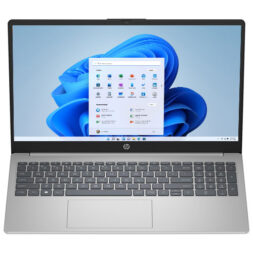
In terms of connectivity and usability, you get a decent selection of ports including two USB-A, one USB-C, HDMI 1.4b, and a 3.5mm headphone/mic jack. A full-size keyboard with numeric pad is great if you need the extra keys. Battery life is also a strong suit, delivering up to 10 hours on mixed usage and featuring HP Fast Charge for quick top-ups.
2. Best for portability: ASUS Zenbook A14 14″ Copilot+ laptop
It’s easy to appreciate a laptop that weighs just 2.16 pounds and is thin enough to slip into your bag when you’re on the go. ASUS’s own Ceraluminum, a mix of magnesium-ceramic alloy, is the biggest reason why the ASUS Zenbook A14 is so light. Open it up and you get a vibrant 14‑inch OLED panel (1920 × 1200) with 100% DCI‑P3 coverage, 600 nits peak HDR brightness, 0.2 ms response, and VESA HDR True Black 600 certification.
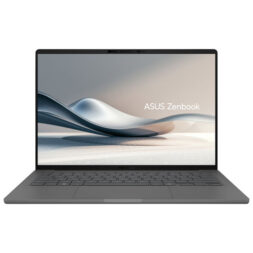
It’s moderate on power, running on the Qualcomm Snapdragon X X1 entry‑level ARM chip, with 16GB of RAM and 1TB of storage. Windows 11 and Copilot+ are on board to bring in AI features off the bat. The biggest advantage, though, may be the long battery life that can hit up to 32 hours per charge based on mixed usage. While Snapdragon Sound and Dolby Atmos is great on the audio side, the thinner body still gives you a decent number of ports: two USB-C, one USB-A, HDMI, and headphone jack.
3. Best battery life: Lenovo Yoga Slim 7x laptop
The Yoga Slim 7x is an ARM-based PC running on the Snapdragon Elite X CPU with 16GB of RAM and 1TB of storage. That’s a good start for creative work like photos, graphics, and general productivity—so long as the apps you use are compatible with ARM systems. The 14.5-inch PureSight OLED touchscreen (2944 x 1840) is appealing, not just for its looks but also for the touch input.
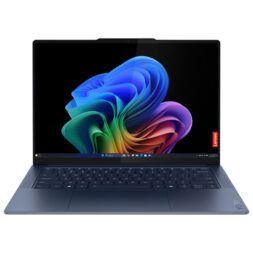
Despite the high-resolution display and thinner body, battery life holds up really well, lasting well over a day through mixed usage. Running Copilot+ and other AI features are an added bonus. When portability and productivity truly matter, the Slim 7x is a worthy option. As a touchscreen laptop, it lacks the hardware to support pen input, so you can’t use a stylus effectively here—you need a Yoga 2-in-1 device for that.
4. Best budget option: HP 15.6″ laptop
This HP laptop blends together modesty and functionality. It’s a decent entry-level or budget option if you’re looking for a Windows laptop that covers the basics. The 13th‑gen Intel Core i5 is fairly capable, even if 16GB of RAM, 512GB of storage, and integrated Intel Iris Xe graphics aren’t necessarily flashy specs. For some multitasking, productivity, and light content creation, it should get you through everyday tasks with minimal fuss.
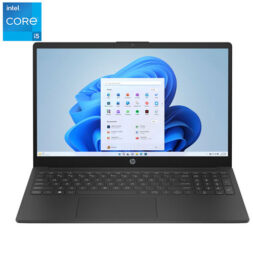
Its 15.6-inch LED screen (1920 x 1080) is ideal to work with multiple apps, only this is a workhorse of a different kind. If you’re looking for heavier content creation or elaborate gaming, this isn’t the laptop for you. Battery life is going to be limited to under 10 hours. You get a good assortment of ports to work with.
5. Best for multitasking: ASUS Vivobook S16 16″ laptop
ASUS positions the Vivobook S16 as an all-round laptop that can appeal to students, professionals, and content creators alike. One reason is the 16-inch IPS display (1920 x 1200) with anti-glare and a 144Hz refresh rate for smoother visuals when working on video content or simply gaming or browsing. You may feel that missing out on an OLED panel is a downgrade in this case, but there’s a lot to like about how the other parts of this device fit together.
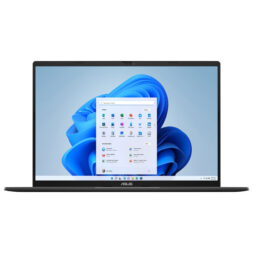
For one, the AMD Ryzen 7 260 processor is a very capable chipset that can handle complex tasks, while 32GB of RAM gives you the flexibility to run several apps at once. With 1TB of storage, you don’t have to worry as much about space if you plan on creating your own content. Battery life is strong enough to last a full day, and the variety of ports means you have options when it comes to peripherals.
6. Best 2-in-1 for note-taking: Lenovo Yoga 7i OLED touchscreen 2-in-1 laptop
Lenovo Yoga 2-in-1 laptops are all about flexibility—literally and figuratively. The Yoga 7i can stand up on its own as a laptop or flip back 360 degrees to become a tablet. The 14-inch OLED panel (1920 x 1200) is always ready to touch, though you may prefer to do more of that with the Yoga Pen Lenovo included in the box. This opens up multitasking in a different way, where you can jot down notes, doodle a sketch, or edit a photo with more precision. With Copilot+ on board, you gain access to AI tools that could enhance the process further, depending on what fits your needs.
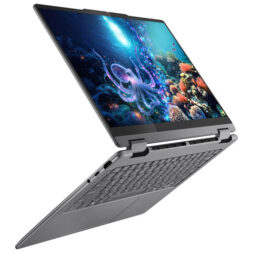
The Yoga 7i has the credentials to be a steady and effective tool. The Intel Core 7 is a heady chipset, and while integrated graphics may be a drag if you’re thinking about gaming, the 60Hz refresh rate isn’t ideal for that anyway. This is more a productivity device with a creative slant, courtesy of the included microSD card slot. It’s great to have 1TB of internal storage—just consider whether 16GB of RAM is enough for what you need.
7. Best for creative students: ASUS Vivobook S 14 Flip
Yet another 2-in-1 laptop that flips, the ASUS Vivobook S 14 Flip is meant to be versatile. Its 14-inch WUXGA touchscreen display (1920 x 1200) supports stylus input, making it ideal for note-taking, sketching, or photo editing (though you’ll need to get the pen separately). The 16:10 aspect ratio and 60Hz refresh rate preclude this from being any serious type of gaming laptop, while the more modest specs make it less effective for really intensive creative tasks.
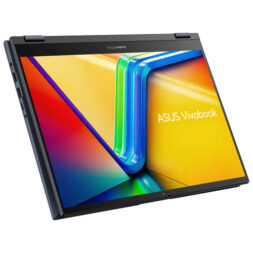
Most students probably won’t run into problems getting work done. The 13th‑gen Intel Core i7 with 16GB of RAM and 1TB of storage are a good enough combination to handle standard productivity and light creative tasks. You get one USB-A 2.0 Type-A, one USB-A 3.2, one USB-C, an HDMI 2.1, and 3.5mm audio jack to round out the ports. Without a memory card slot, you’ll need to make use of those USB ports via adapters.
8. Best for STEM students: ASUS ProArt PX13 OLED touchscreen 2-in-1 laptop
It might be a bit limiting to only propose this as an option for students studying STEM but there’s no doubt about the power involved in the ASUS ProArt PX13. It’s a 2-in-1 that can flip its 13.3‑inch 3K OLED touchscreen (2880 × 1800) back all the way. It supports stylus input, which you get included in the box—a nice bonus given how rich the screen looks. Anything visual that you’re working on, be it imaging, engineering, or coding, will look vibrant on this screen.
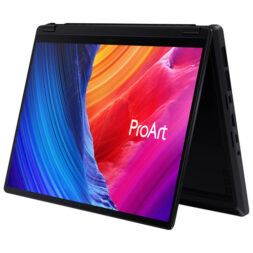
Under the hood, the PX13 packs a punch. The AMD Ryzen AI 9 HX 370 CPU complements the NPU (up to 50 TOPS) in handling AI tasks, among other things. Then there’s the NVIDIA RTX 4060 GPU, backed by 32GB of RAM and 1TB of storage. Even the port selection is good. The challenge is battery life won’t go beyond 5-8 hours per charge.
9. Best typing experience: Lenovo IdeaPad Slim 3 15.6″ touchscreen laptop
The IdeaPad Slim 3 isn’t a laptop that specializes in one particular aspect. It’s an all-rounder for multitasking, productivity, and media consumption. With the AMD Ryzen 7 5825U CPU with 16GB of RAM and 512GB of storage, it can handle the basics like word processing, web browsing, and light creative tasks. A 15.6-inch LCD touchscreen (1920 x 1080) helps, as does a backlit full size keyboard complete with a numeric pad for any tasks made easier having it nearby.
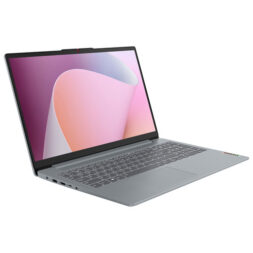
Despite its larger size, the 3.5-pound weight is light enough for students and professionals who need to commute or travel. Enjoy a range of port options with two USB-A, one USB-C, HDMI 1.4b, four-in-one memory card reader, and a 3.5mm headphone/mic jack. Just measure your expectations with battery life ranging between 6-8 hours of mixed use.
10. Best Chromebook: ASUS CX34 14” Touchscreen Chromebook Plus
The ASUS CX34 14″ touchscreen Chromebook Plus is already a different kind of device because it’s running on a different operating system. If you’re a student or simply like what ChromeOS has to offer, there’s a lot to like about the combination here. Powered by a 13th-gen Intel Core i5-1334U with 16GB of RAM and 512GB SSD of storage, it proves capable when you want to multitask, work on documents, or do some light creative edits. The 360-degree hinge and stylus support also open up some artistic avenues for the 14-inch touchscreen (1920 x 1080) to use this device in varying ways.
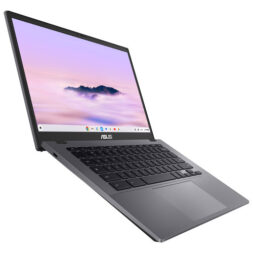
Chromebooks generally hold advantages in battery life, and up to 10 hours is pretty good for laptop at this size and spec. Fast charging will get you to 60% in 49 minutes, so you won’t be out of power for long when running low. As for ports, you get two USB-C, two USB-A, HDMI 1.4, microSD card slot, and a 3.5mm headphone/mic jack.
If you are adding a laptop to the list of things you need to carry to and from school for a wide range of productivity applications, then look no further. These powerful Windows-based laptops are light, stylish, and versatile multitaskers. Be sure to keep your new computer well protected while commuting, perhaps in a padded, laptop-friendly backpack so you have it for many years.
How we decide what’s best
At Best Buy Canada, curating a “Best of” or “Top X” list is a thoughtful and transparent process. We evaluate products based on brand reputation, popularity, customer interest, and relevance within their category. Our bloggers then bring deep product knowledge and hands-on experience to help identify the best options for you.
Testing goes far beyond unboxing—products are used in real-world scenarios, with our bloggers putting themselves in your shoes to better understand how a device or accessory performs day to day and whether it meets expectations. Where possible, they compare similar models and assess key factors such as design, performance, and category-specific features to offer well-rounded, informed recommendations. For niche or new product categories where broader hands-on testing might not be possible within that category as a whole, our skilled bloggers evaluate the products using every objective method they can.
In some cases, a blogger may not have direct experience with a specific product. When that happens, they draw on broader expertise, such as time spent with comparable items, an understanding of the brand’s current lineup, and its overall reputation. We also draw on insights from Best Buy’s in-house category experts and aggregate feedback from both trusted reviewers and customer ratings to make the best selections.
We’ll always be clear about the basis of our recommendations—whether they stem from first-hand testing or extensive research. Authenticity matters to us. Every “Best of” guide is built on objective insights, product knowledge, and a commitment to helping you make confident buying decisions.
What to consider before you buy
Productivity can mean different things to different students. If you’re studying to be an engineer your needs may not be the same as a fellow student in a creative program. Most PC manufacturers try to balance things out so that they offer something for everyone, but that can feel more expansive depending on what model you go with.
For example, laptops that can deliver better results for creative workflows will prioritize both CPU and GPU performance. That can sometimes come with compromises in battery life, so it’s something to keep in mind. Laptops that work effectively for word processing and other related tasks prioritize CPU power above everything else. The result can mean better battery life.
Match your laptop to your program

Not all students share the same needs when it comes to the tools they use. In university, what you’re studying influences what you need in a laptop. Engineering students will prioritize processing power and software compatibility with apps like MATLAB, AutoCAD, SolidWorks, or other simulation tools that require a capable CPU, like an Intel Core i7 or AMD Ryzen 7. A laptop with at least 16GB of RAM and fast storage ensure smoother multitasking and quicker project load times, especially during intensive simulations or CAD rendering.
Creative students doing graphic design, video production, or 3D animation will lean toward stronger GPU performance and high-quality displays. Dedicated graphics, like NVIDIA RTX cards, act as accelerators for rendering content in Adobe Creative Suite, Blender, or DaVinci Resolve. A vibrant, high-resolution, and colour-accurate screen can significantly affect the quality of your work and workflow precision. For students who don’t fall in either of those camps, be it studying humanities, business, or social sciences, will likely want a good mix of portability, battery life, and efficiency.
Mobility is always a plus, much like reliable performance and battery life tend to be when working on different tasks. High-end graphics and the best specs may not be necessary but you would want compatibility with the productivity tools required to get things done.
RAM and multitasking power
RAM capacity continues to be a key factor in a laptop’s long-term performance. At this point, you should consider 16GB as the new baseline, unless your needs are very, very basic. RAM handles all the multitasking load on a PC, like running multiple browser tabs, collaborating via video calls, or working in Microsoft Office and cloud-based platforms. To strike the right balance, 16GB is a good start to ensure smoother multitasking today and some future-proofing tomorrow.
However, if you’re a student in a creative program, like graphic design, film production, game development, or even AI and data science, 32GB or more is going to be better. Creative apps need more memory than others, so using Adobe’s Creative Suite apps, Blender, and AI modeling platforms such as PyTorch or TensorFlow can consume it in larger numbers. More RAM means better performance, faster rendering, and fewer slowdowns when handling large files or datasets.
Be mindful that manufacturers will solder RAM directly onto the motherboard in modern laptops. That means no upgrades later on, making your initial choice at the time of purchase critical. That’s not to say there aren’t premium or workstation laptops with upgradeable slots, but thin-and-light models don’t usually give you that option. Plan ahead by opting for more RAM than you might currently need to avoid outgrowing your machine halfway through your degree.
Premium laptops for multitaskers and gamers
Expect blazing speeds and superior components from a premium gaming laptop. These Windows based computers will run the most demanding applications, and provide superior connectivity and versatility. They are sought after by people requiring a high performance laptop for school or work, and by people who want a laptop that will continue to perform at the highest level for many years.
In addition to having brilliantly fast components, these laptops are also equipped to deliver faster response times and refresh rates. To do so they tend to include the newest high end video cards and displays. They usually also include enhanced keyboards and lighting effects. All of these features ensure that gamers stay immersed in the action so they can perform at the highest level. Of course, gaming laptops are also ideal for very demanding computing needs like complex computations or rendering video.
Learn more about these best in class laptops on the blog.
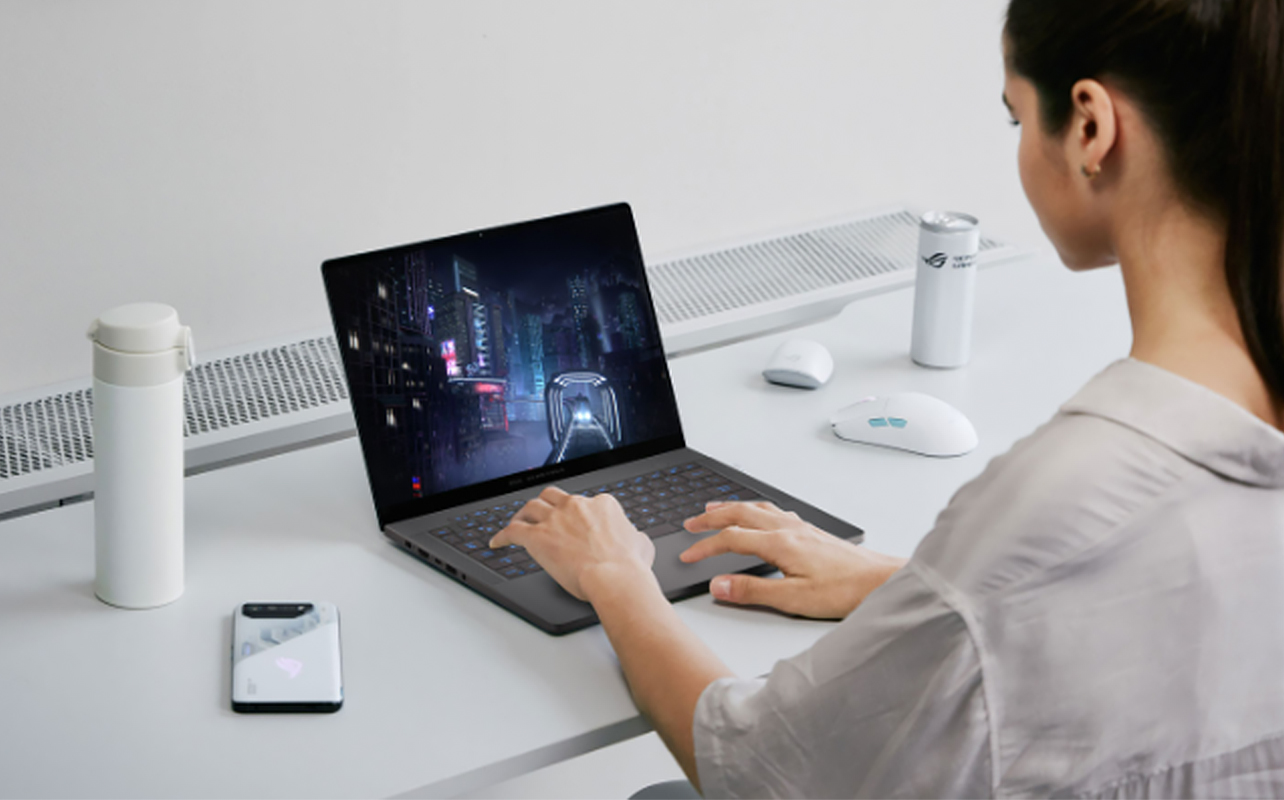
Copilot+ PC laptops with AI features
It’s now common to see Copilot+ laptops equipped with the latest Copilot AI features running on Windows 11. These include Live Captions, where you can see subtitles and translations for all audio playing on your laptop. Cocreator is an image generator in the Paint app where you can create high-quality images from a doodle, sketch or drawing. You can also do it with text prompts. Studio Effects works with video calls to create various effects to keep you centred in frame, maintain eye contact, blur the background and more. You can ask Copilot anything, anytime, and it works locally on-device, meaning you don’t need an Internet connection to ask it what you need. Copilot+ PCs have a dedicated key for just these purposes.
Many new laptops—especially Copilot+ PCs—now include Neural Processing Units (NPUs) that handle AI tasks directly on the device. This means features like real-time translation and AI photo editing work quickly and securely, even without an internet connection. With Windows 10 support ending on October 14, 2025, Copilot+ PCs are also exclusive to Windows 11.
Apple laptops with fast M3 & M4 processors
Best Buy also carries a selection of new and refurbished Apple laptops that may be exactly what you are looking for. Apple laptops are equipped with a limited range of processors and memory configurations. The newest Macbook Pros, for example, are equipped with Apple’s impressive M3 and M4 processors for fast computing, though their base configurations have less memory and storage than most of the laptops above.
Cover all your Back to School needs
Laptops may have a starring role, but students need more as they head back to school this fall. That is, of course, if you also need accessories to go with your new laptop. Whether you shop online or choose a safe, in-store experience, and whether your class is on campus or delivered through remote learning, Best Buy has everything you need for a successful school year.





